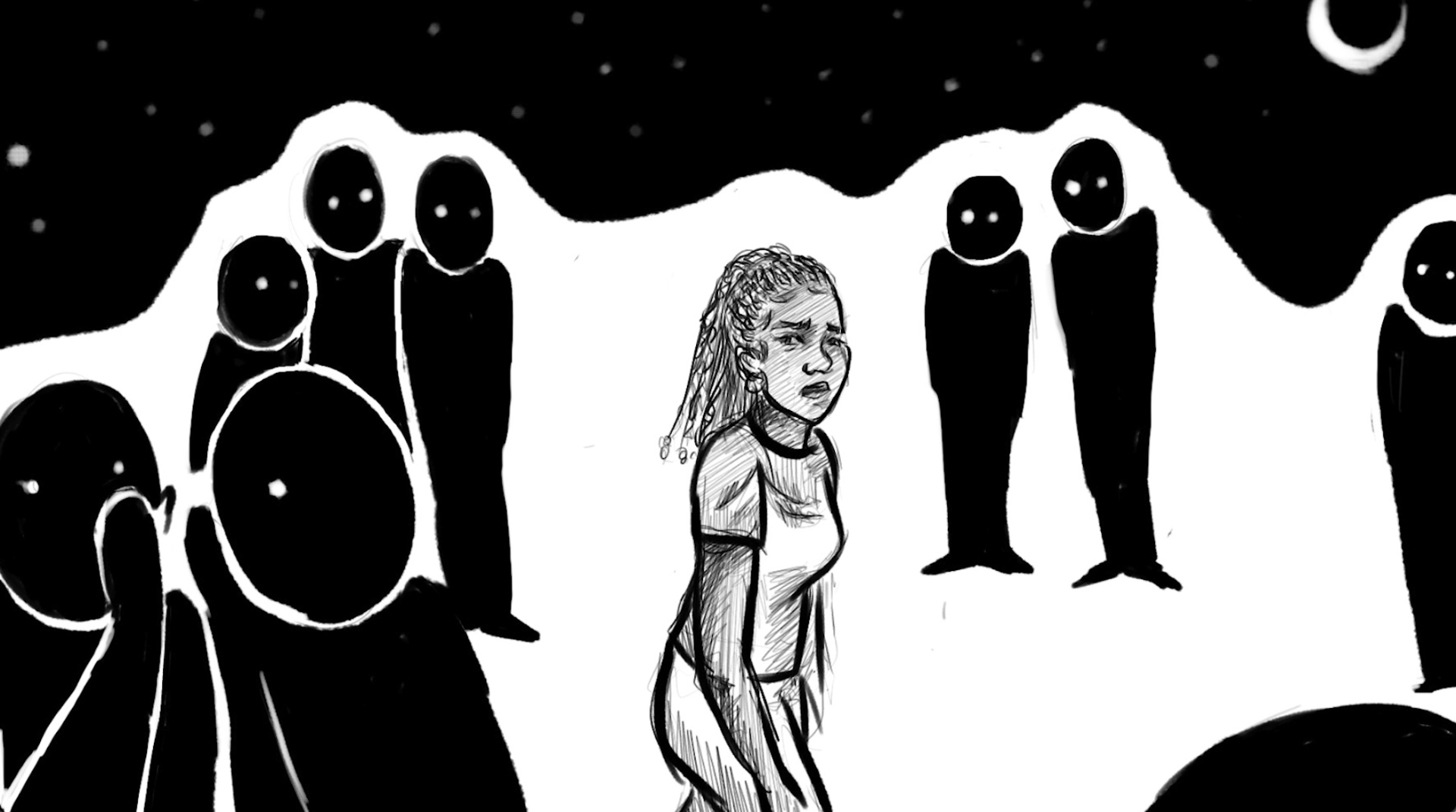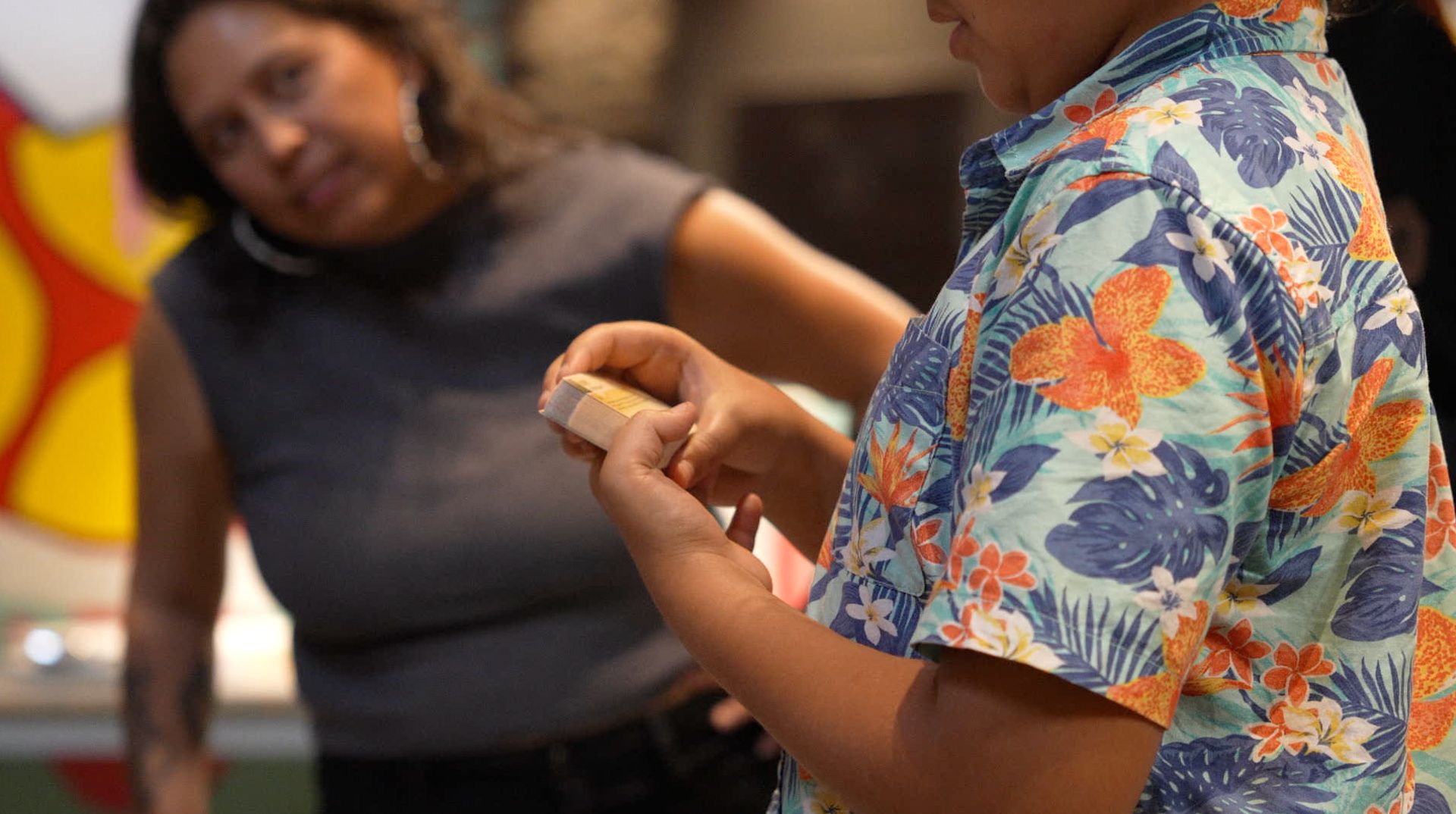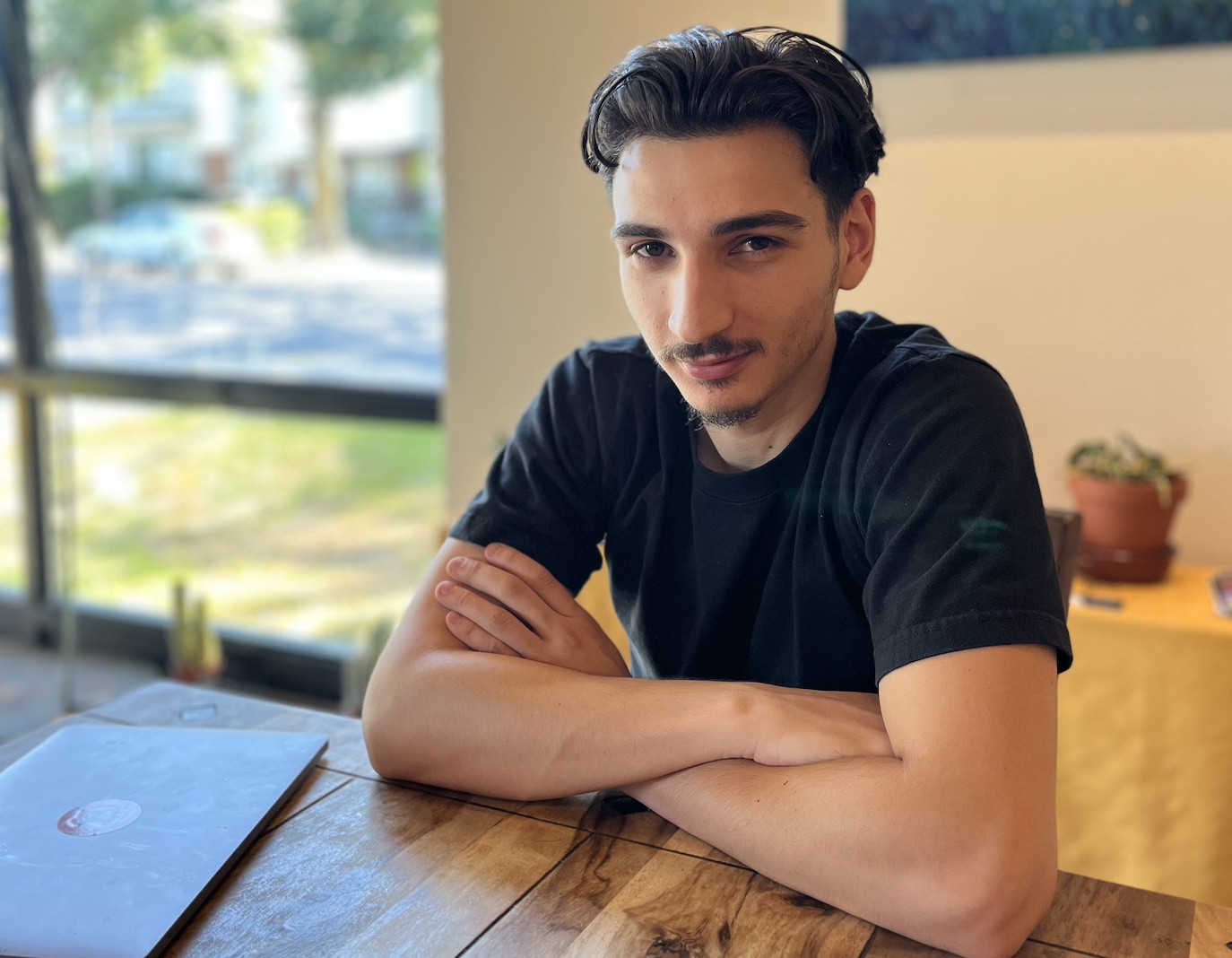In front of the entrance to the Jean-Talon subway, Éric stands and hands passers-by an empty cup of coffee. All smiles, the 55-year-old man does not mind the cold of this stormy winter day. The force of the wind doesn't seem to intimidate him either. “Outside the [subway] door, at least, I say hello to the world; the world is talking to me, regulars come to see me every day. I see them. At least that's fun,” he said.
Eric has been homeless for two years. Before, he worked for twenty years as a worker in an electrical company and lived on the first floor of a duplex belonging to his grandmother. But a series of incidents occurred and left him homeless.
“At first I lost my job and was then diagnosed with a manic-depressive illness,” he tells us. After several months of looking for a job in vain, Eric gave up. “I was discouraged. After I was interned for eight months at Louis-H Hospital. Lafontaine, I had no strength, or even the will to look for a job.”
The duplex where Éric lived at the time was soon put up for sale by his family, leaving him homeless and alone in the face of an invisible mental illness. “The new owner kicked me out because that was the deal. I looked for a place to stay. Nothing. I went out into the street,” he tells us in a distant tone.
Today, Eric's mental health has improved, although he is still considered depressed. He only has one appointment per month with a psychiatrist. The doctor listens to him talk about “whatever comes to his mind” and prescribes medication. “A psychiatrist gives you medication, and when you're stable, it's good for the others. You know, you know,” he concludes casually.
“When you are homeless, you can't count on social services to get by”
Eric's case is not isolated. According to the Ministry of Health and Social Services (MSSS), of 30% to 50% people experiencing homelessness in Quebec would have mental health problems.
At only 15 years old, Jayne Malenfant had to leave her community of Kapuskasing, Ontario, to find mental health help. “There weren't a lot of services in Kapuskasing. So it was really a choice between staying with my family or accessing mental health support.” It was the need to stay close to her psychologist that led her to live homeless for three years in Saskatoon.
What saved Jayne was the support from her community: her friends and family members were able to take turns hosting her. “What helped me was having stable people around me. It wasn't state services. When you are homeless, you can't count on social services to get by,” she insists.
“It is only during moments of psychotic crisis that we consider the situation of an itinerant person”
Today, Jayne Malenfant is an expert in youth homelessness and a professor at McGill University. According to her, taking into account the mental health of homeless people is too late. The mental disorders suffered by homeless people often stem from, or are frequently exacerbated by, the precarious situation in which they live. These disorders, when left untreated, can lead to psychotic crises. “Very often, it is only during moments of psychotic crisis that we consider the situation of a homeless person: this is the case for mental health, but also for a housing solution”, says MMe Mischievous.
Even today, “a homeless person in crisis receives medical care that will calm them down, but they will then be released into the streets, even though the street is the source of their crises”, specifies the expert. And sometimes, the response to these crises is not medical, but judicial: “In a situation of homelessness, psychotic crises are much more visible than if you have one at home. So, often, the response to these homeless people in crisis is not a supportive response: it is the police who intervene.”
This is what Alain Magloire experienced on February 3, 2014. Father of two children and holder of a bachelor's degree in molecular biology from UQAM, Mr. Magloire suffered from mental illness. Becoming itinerant, the microbiologist did not benefit from adequate medical follow-up. In the midst of a psychotic crisis, he was shot dead in broad daylight by police officers from the Service de police de la Ville de Montréal, after displaying violent behavior. Alain Magloire could have avoided a tragic end if, however, he had been in a shelter at the time of his psychotic crisis.
Among the shelters, there are those that offer services 24 hours a day, and those that are only open during the day. Called “day centers,” these shelters offer resources during the day, such as meals, showers, clean clothing, and other resources. Shelters that are open 24 hours a day, in addition to these services, offer overnight shelter, often during the colder months of the year. However, Eric remains skeptical about these solutions. According to him, these shelters do not meet everyone's needs.
“Shelter is hard. It's coughing, it's farting, it's groaning, it's screaming. It is open land. I prefer to lie outside.”
Each month, a social worker visits Eric to give him the last-resort financial assistance of $820 that he receives from the state. Since he doesn't have a permanent address, he can't open a bank account. “A nice sum,” he says, but it doesn't allow him to find affordable housing. “Do you know how much a 1 ½ costs? 900 bucks! I would like to find housing for at least $800, I have been looking for a year and a half! ” he said, disconcerted.
For several months, the fifty-year-old has been taking refuge in an emergency shelter in the Villeray district. He also occupies street corners when he has to give up his seat for a period of seven days. In fact, just like Le Refuge du Coeur de l'Île, some emergency shelters in Montreal offer a bed to homeless people during 14 days, after which the person experiencing homelessness must leave the shelter for Seven days to make room for others. However, in an amused tone, Éric tells us that he prefers the street to the shelter: “The shelter is hard. It's coughing, it's farting, it's groaning, it's screaming. It is open land. I prefer to lie outside.”
Eric's depression makes it difficult to live with others. “Their mental condition is a disaster,” he admits. But what he finds the most difficult is the solitude he experiences on a daily basis. He stays away from others to avoid bad company. Drugs and alcohol are common in some circles.
“Loneliness is hard. It's really hard. But in these environments, it's better to be alone,” he says thoughtfully.
“You can never separate those who have mental health issues from those who use drugs and who don't.”
Katherine McIntosh, executive director of the Refuge du Cœur de l'Île, and Émile Bernier, site coordinator, regret the lack of resources to provide care for people with mental disorders, including Éric.
“Without exaggeration — and this is in line with my experience as a former health worker and street worker — I have the impression that 80% of people experiencing homelessness here have mental health problems, but you can never separate those with mental health issues from those who use drugs and others,” says Émile Bernier. Although he is aware of the mental health problems that every homeless person is likely to experience, the coordinator reminds us that he is not in a position to make a diagnosis for people arriving at the shelter: “We cannot make a diagnosis for these people; we are not health professionals.”
“We are experts in providing shelter and ensuring the holistic well-being of the person,” says M.Me McIntosh.
In the meantime, the Refuge du Cœur de l'Île is working in collaboration with a local team associated with the CIUSSS du Nord-de-l'Île-Montréal, including a psychiatrist. However, psychiatrists only work with people who have uncontrolled psychoses. “To take care of 80% of people with mental disorders, you would need 15 psychologists, then 2 or 3 more psychiatrists. But our current psychiatrist has no choice but to focus only on those people who have uncontrolled psychotic disorders.”, Mr. Bernier tells us. This is nevertheless perceived as a victory for the site coordinator, because “some people have difficulty getting follow-ups in institutions”. “At least there is a psychiatrist who shows up here, and when the residents agree, it is easier to start follow-ups,” he explains to us.
“The lack of resources in the City is obvious”, confides the executive director of the Refuge du Cœur de l'Île. The shelter is limited to 45 places to ensure that it can offer three meals a day to its residents. And when the shelter is full, government funding only provides additional chairs for people to lie on.
On Sainte-Catherine Street West, we find Resilience Montreal, the day shelter that serves homeless people in Cabot Square. Like the Refuge du Cœur de l'Île, Résilience Montréal lacks resources to support people with mental disorders. “The majority of people who come to use our services here have obvious mental health problems,” says David Chapman, the founder and CEO of the organization. “In terms of the help they need, there is a big gap, and we are trying to fill this gap by providing them with care. But to do that, more money would have to be spent on emergency services.”
Housing first: a solution?
When Katherine McIntosh was asked what would be the solutions to ensure better care for homeless people living with invisible mental disorders, the answer is direct: “The solution is the Housing first : giving people apartments and following up in these apartments to ensure that they readjust to social life and improve their living conditions.”
In Quebec, the approach Housing first offers the possibility for people experiencing homelessness to have housing whose cost is fixed at 30% of the social assistance they receive. This initiative aims to offer these people a stable place so that they can then benefit from mental or physical health care, support in finding a job or even assistance for people addicted to drugs. However, access to these programs remains difficult, explains youth homelessness expert Jayne Malenfant, especially because of the housing crisis in Montreal.
In Finland, a Housing First approach seems to work. Each year, the State invests $45 million to build or renovate social housing for the homeless. Often cited in Europe as an example to follow, the country has seen a drop in the number of homeless people, from 18,000 in 1987 to 7,000 in 2016. The Housing First strategy has placed Finland among the few Western countries where the number of homeless people is steadily decreasing. The country wants to definitively solve this social problem by 2027.
In Quebec, the number of homeless people is constantly increasing. The latest census, made public in September 2023, shows 10,000 people in a situation of visible homelessness during the year 2022, including 4,690 people in Montreal. During the year 2023, less than 5,000 affordable and social housing units have been built in Quebec.
We sought clarifications from the Ministry of Health and Social Services (MSSS) and the Ministry of Municipal Affairs and Housing (MAMH) about obstacles to the construction of social housing, but had received no response at the time of publishing these lines.
Competition among community organizations
According to Mr. Lord, a specialist in land use planning, the complexity surrounding the construction of social housing in Quebec is linked to the governmental structure. “Unlike Finnish cities, Quebec cities are not in charge of either the mission or the funds intended for the construction of housing.” In Quebec, each city launches calls for projects from community organizations to initiate the housing construction process. However, the study and then the validation of these projects involve long delays. “Between the submission of the project to the Société d'habitation du Québec (SHQ) and the delivery of the keys to the residents, it can take 5 to 10 years,” Mr. Lord explains to us.
Moreover, this principle of “à la carte financing,” he continues, leads to competition between community organizations. “Every two years, community organizations compete for funding from the province.”
A situation that Mr. Chapman, the founder and CEO of Resilience Montreal, also describes. “We are witnessing competition between resources and between approaches. And right now, we are seeing a reorientation of funds towards Housing First programs at the expense of shelters.”
Emergency shelters, and these abandoned people
Prioritize the financing of the approach Housing first instead of shelters is not a solution, insists Mr. Chapman. “If there is no adequate emergency services program and no safe place for people to go while waiting for housing, we will end up with dead people,” he laments. A story he doesn't want to see repeated. In 2022, a survey by the Duty revealed thatForty homeless people had been found dead during the year.
Eric, who is still waiting for housing despite the approach Housing first, don't consider shelter as a viable option because of her mental health either. When left in front of the Jean-Talon metro station, he expressed his desire to persevere in the search for housing on his own. In the meantime, “we manage, it's the instinct of survival” he says with a discreet smile.
To go further
Shelters open 24 hours a day:
- Refuge du Coeur de l'Île
- Old Brewery Mission, Webster Building — Emergency Services
- L'Auberge Madeleine
- Gordon Gardens
- Chez Doris
- CAP St-Barnabé
Day shelters:
- Resilience Montreal
- Home Bonneau
- Love in action
- Mile-End Community Mission
- Montreal Native Friendship CenterL
- Mission St-Michael









%20(1).jpg)
.jpg)
.jpg)